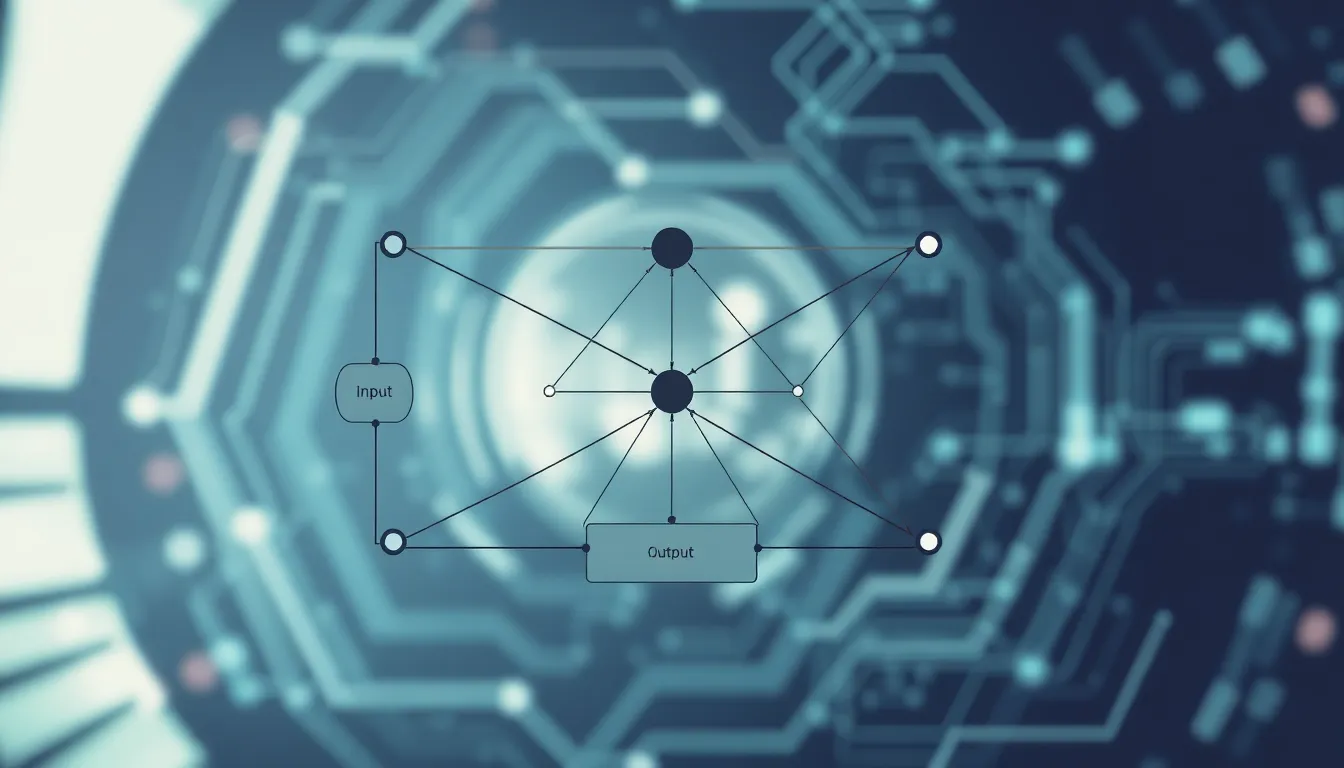Neural networks are the brainy superheroes of the tech world, mimicking the human brain’s ability to learn and adapt. They’re not just a fancy buzzword tossed around at tech conferences; they’re the secret sauce behind everything from voice assistants that actually understand you to those eerily accurate movie recommendations.
Imagine teaching a computer to recognize a cat versus a dog without showing it a single picture. Sounds like magic, right? Well, it’s not—it’s neural networks at work! These powerful algorithms are revolutionizing industries and making our lives easier, one data point at a time. So buckle up as we dive into the fascinating world of neural networks, where technology meets intelligence in the most delightful way.
Table of Contents
ToggleOverview of Neural Networks
Neural networks replicate the brain’s method of learning and processing information. These systems find applications across diverse fields, from healthcare to finance.
Definition of Neural Networks
A neural network involves layers of interconnected nodes mimicking neurons. Input data moves through these layers, undergoing transformations to produce output. Each node processes information and passes it to the next layer, allowing for complex pattern recognition. Algorithms optimize these connections during training, making neural networks effective for tasks such as image recognition and natural language processing.
History and Evolution
Neural networks originated from early concepts in the 1940s. Pioneers like McCulloch and Pitts proposed models of neuron behavior. Over the decades, researchers faced limitations in computational power and data availability. Breakthroughs occurred in the 1980s with backpropagation, enhancing training efficiency. Significant advancements emerged in the 21st century, powered by increased computing capabilities and vast datasets, leading to the widespread adoption of deep learning techniques. Now, neural networks influence sectors daily, shaping modern artificial intelligence applications.
How Neural Networks Work

Neural networks process information in a structure that resembles the human brain’s neural connections. Layers of interconnected nodes, often called neurons, work together to transform input data into useful outputs.
Structure of Neural Networks
Layers form the backbone of any neural network. Each network consists of an input layer, one or more hidden layers, and an output layer. Input layers receive data, hidden layers perform computations, and output layers deliver results. Neurons in these layers connect through weighted links. Weights adjust through learning, enhancing the network’s ability to make accurate predictions. Each neuron applies an activation function that introduces non-linearity, allowing the network to handle complex patterns efficiently.
Types of Neural Networks
Various neural networks cater to distinct tasks. Feedforward neural networks enable straightforward applications, propagating inputs through layers to generate outputs. Convolutional neural networks excel in image recognition, capturing spatial hierarchies in data. Recurrent neural networks process sequential data, making them ideal for tasks involving time series or text. Generative adversarial networks engage in unsupervised learning, generating new data from existing examples. These diverse structures address unique challenges and underline the adaptability of neural networks in modern technology.
Applications of Neural Networks
Neural networks play a crucial role in various industries. These systems present unique capabilities that transform how tasks are performed.
In Healthcare
Neural networks enhance diagnostic accuracy. They analyze medical images, such as X-rays and MRIs, to identify anomalies. Algorithms trained on vast datasets detect patterns indicative of diseases. For instance, studies show that neural networks can outperform human radiologists in certain cases. Personalized treatment plans also benefit from neural networks, enabling predictions of patient responses to medications based on historical data.
In Finance
Neural networks revolutionize financial forecasting. They process vast amounts of market data to identify trading patterns. Many institutions employ deep learning methods to predict stock price movements. Fraud detection systems use neural networks to analyze transaction behaviors, flagging suspicious activities in real-time. Additionally, portfolio management utilizes these networks to optimize asset allocation, maximizing returns while minimizing risks.
In Image and Speech Recognition
Image recognition excels with convolutional neural networks. They classify and tag images with remarkable accuracy, playing a pivotal role in applications like facial recognition. Speech recognition technologies leverage recurrent neural networks for understanding natural language. These systems improve user interactions in voice-activated assistants. Significant advancements in both fields result from ongoing research and development, showcasing neural networks’ transformative impact on everyday technology.
Advantages and Limitations
Neural networks offer significant advantages alongside some inherent challenges. Their benefits and drawbacks shape their effectiveness in various applications.
Benefits of Using Neural Networks
Enhanced predictive capabilities characterize neural networks. They excel in processing vast amounts of data, identifying patterns that traditional algorithms often miss. Improved accuracy emerges in tasks like image and speech recognition. In healthcare, for instance, neural networks analyze medical images with remarkable precision, often surpassing human capabilities. Adaptability to different problems also plays a critical role; various architectures accommodate specific tasks, such as convolutional networks for image processing. Moreover, they enable automation of decision-making processes, facilitating real-time analysis across diverse sectors such as finance and e-commerce. Overall, their ability to learn from data continually boosts performance and keeps pace with evolving technologies.
Challenges and Drawbacks
Despite their advantages, neural networks face notable challenges. High computational resource requirements can limit effective deployment, especially for complex architectures. Overfitting presents another risk; they might perform well on training data but struggle with unseen information. Lack of interpretability complicates understanding decision-making processes, which can be problematic in sensitive areas like finance and healthcare. Additionally, extensive labeled data is often necessary for training, leading to greater resource investment. Training time can also extend significantly when handling large datasets. Finally, potential biases in data can propagate further complicating the outcomes produced by the networks.
Future Directions
The future of neural networks holds great promise across various fields. Researchers are focusing on innovation and optimization to enhance performance further.
Trends in Neural Network Research
Emerging trends in neural network research include developments in architectures and algorithms. Attention mechanisms play a crucial role in improving contextual understanding within sequential data. Additionally, transfer learning allows models to leverage knowledge from one domain to boost performance in another, effectively reducing training time and resource demands. Lightweight neural networks aim to provide efficient solutions, especially for edge devices, enabling real-time applications. Moreover, neuromorphic computing represents a shift toward hardware designed to mimic biological processes, potentially revolutionizing how neural networks operate.
Potential Impact on Industries
Industries stand to benefit significantly from advancements in neural networks. Healthcare organizations increasingly rely on these technologies to enhance diagnostic processes, equipping them with predictive tools for early disease detection. Financial institutions apply neural networks for real-time fraud detection, improving security and trust. Retail companies harness data analytics to personalize customer experiences, tailoring recommendations for increased engagement. In the automotive sector, neural networks contribute to advancements in self-driving technology, driving innovation in transportation safety and efficiency. As adoption grows, the profound impact of neural networks on various industries becomes evident.
Neural networks are reshaping the landscape of technology by mimicking the human brain’s ability to learn and adapt. Their versatility across sectors like healthcare finance and entertainment showcases their significant impact on everyday life. As advancements continue in architecture algorithms and neuromorphic computing the potential for innovation remains vast.
With ongoing research and development neural networks are poised to drive further breakthroughs enhancing accuracy and efficiency in various applications. The future holds exciting possibilities as industries embrace these transformative technologies to improve processes and create personalized experiences.



